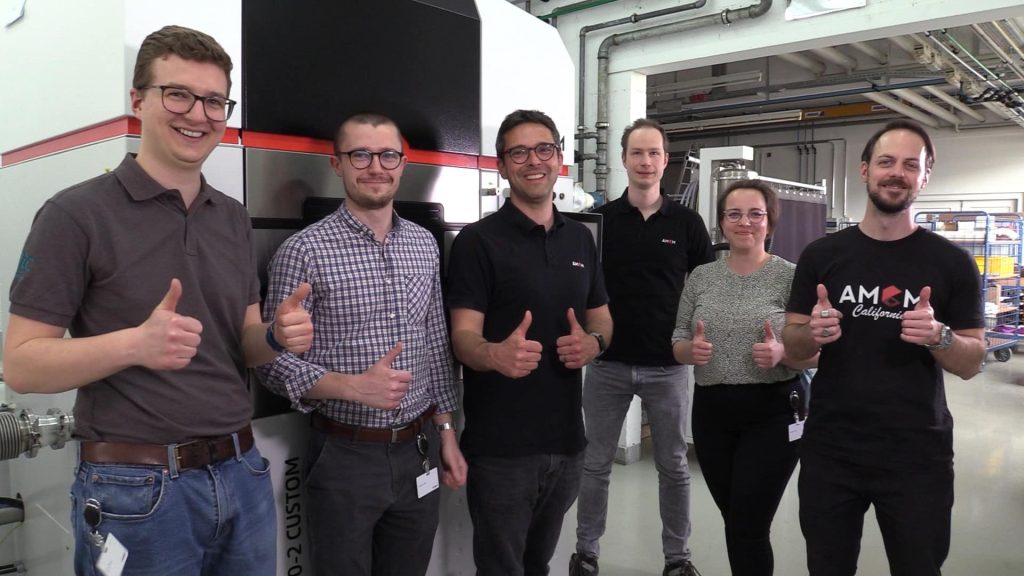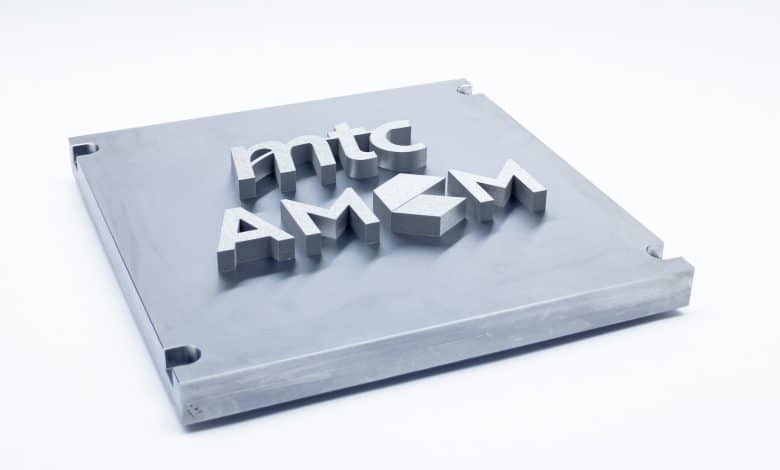The Manufacturing Technology Centre (MTC) has acquired the AMCM M 290-2 FLX, an industrial 3D printing system from AMCM, a company affiliated with EOS.
A key feature of the AMCM M 290-2 FLX lies in its dual nLIGHT AFX lasers. These lasers offer a unique ability to adjust their spot size, ranging from a narrow 85 µm to a wider 210 µm allowing for the creation of a shallower and broader melt pool during printing. As a result, the AMCM M 290-2 FLX, offers several benefits, including faster printing speeds, more stable printing processes, and a reduction in soot and spatter, says the company. These improvements address limitations encountered with traditional methods that rely on beam defocusing, moving to a beam shaping approach that holds vast potential.
Sina Trik, sales representative for AMCM, EMEA, said, “The UK manufacturing sector is at the forefront of innovation. While the use of materials such as copper offers huge benefits to product designers, manufacturers still face challenges in the additive manufacturing process. It’s always amazing to work with MTC – a true thought leader in UK – to expand the field of industrial metal AM.”

Technical capabilities of the AMCM M 290-2 FLX
The AMCM M 290-2 FLX system boasts “full field overlap,” meaning both lasers can access any point on the printing platform. This allows for greater flexibility in how objects are oriented during the printing process. Initial tests have shown promising results, particularly when working with materials like IN718 which have historically posed difficulties. As per MTC, this system represents a leap forward in AM efficiency and is expected to further improve with the integration of an additional laser source.
Another aspect of the AMCM system is its precise control over gas flow and oxygen levels within the printing chamber. These factors are crucial for ensuring high-quality results in powder bed fusion (PBF) processes. The system maintains a stable atmosphere with oxygen levels of <50 ppm, enabling MTC to explore the use of materials like pure copper, which are challenging in 3D printing.
Moreover, the AMCM M 290-2 FLX offers the ability to heat the printing platform up to 500°C. This opens doors for evaluating applications in demanding industries like aerospace and defense. The capacity of AMCM’s system for pre- and post-heat treatment caters to processing high-performance materials such as aluminum alloys and refractory metals, further highlighting its versatility.
Apart from exploring new materials, MTC aims to leverage the AMCM system to enhance production speed and the size of printable components. The system boasts dual 1200-watt laser sources, making it a high-powered solution, says the company. Additionally, the adjustable spot size of the nLIGHT lasers allows for swift adjustments, facilitating precise printing of intricate structures and contours while accelerating overall production. This flexibility potentially reduces the need for extensive post-processing steps, contributing to cost-effectiveness.

A look at beam shaping in metal AM
Beam shaping involves manipulating the laser beam profile using various optical components before it interacts with the powder bed. This allows for the creation of different beam shapes beyond the standard Gaussian profile.
Beam shaping is a promising area of research, as evidenced by Fraunhofer IAPT‘s Philipp Kohlwes, Head Of L-PBF, who highlights its potential to improve stability and productivity in metal AM. To achieve this, researchers at the institute, led by Kohlwes, explored technologies like adapting laser profiles to optimize energy input in the melt pool during the LPBF process. Traditional Gaussian laser profiles were problematic because they caused uneven energy distribution, leading to vaporization issues and compromising process stability.
Beam shaping offered a potential solution by adjusting the laser profile to ensure a consistent temperature distribution within the melt pool. This, in turn, led to the benefits like improved microstructure control, potential cost reduction, and increased productivity with faster printing speeds.
Back in 2021, Lawrence Livermore National Laboratory (LLNL) investigated how laser beam shaping could be used to enhance metal AM. By shaping the laser into a bullseye pattern via conical lenses and additional optics, Bessel beams redistribute energy, reducing pore formation and “keyholing” defects. These beams offer superior control over heat deposition, resulting in reduced turbulence and spatter in the melt pool. Parts printed with Bessel beams exhibited denser, stronger, and more robust properties compared to those printed with Gaussian beams.
Join the Expert Committee for the 2024 3D Printing Industry Awards to help select the winners!
What 3D printing trends do the industry leaders anticipate this year?
What does the Future of 3D printing hold for the next 10 years?
To stay up to date with the latest 3D printing news, don’t forget to subscribe to the 3D Printing Industry newsletter or follow us on Twitter, or like our page on Facebook.
While you’re here, why not subscribe to our Youtube channel? Featuring discussion, debriefs, video shorts, and webinar replays.
Featured image shows the MTC team visiting AMCM Starnberg to receive comprehensive practical training on the machine before it is delivered. From left to right: Chris Dalton, Alex Hardaker, Marius Christ, Christoph Seyfert, Fiona Schulz, Marius Hoyer. Photo via MTC.


